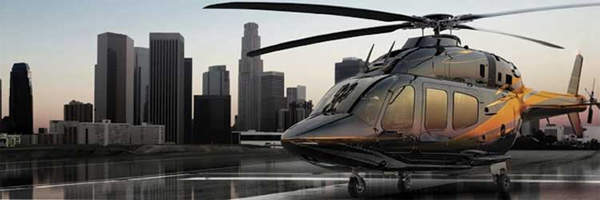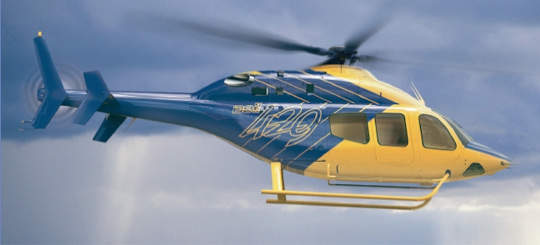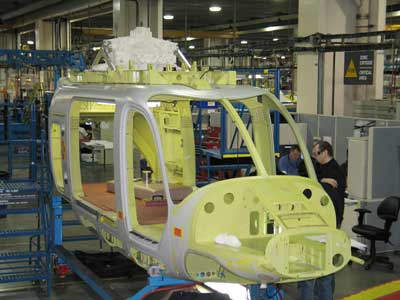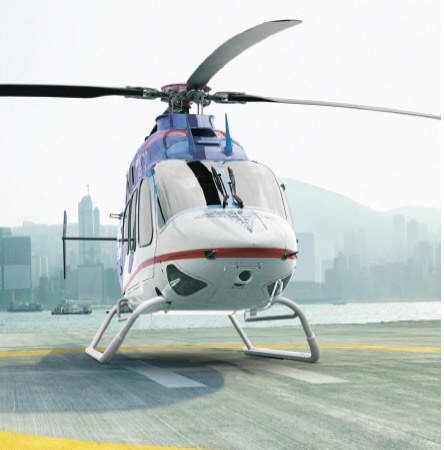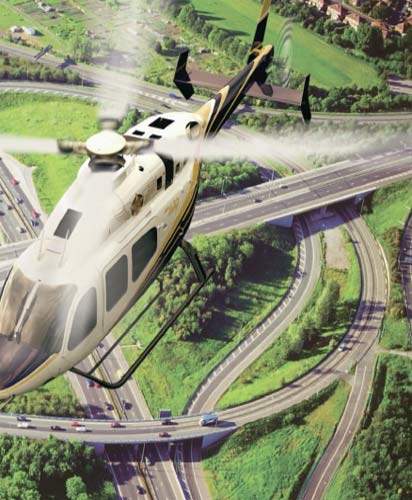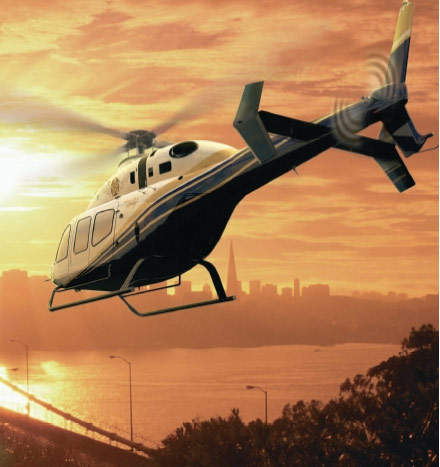In February 2005, Bell Helicopters, Korea Aerospace Industries and the Japanese company Mitsui Bussan signed an agreement on the manufacture and marketing of the Bell 429 light twin helicopter.
The Bell 429 incorporates a range of advanced technologies developed under Bell’s modular affordable product line (MAPL) programme to include advanced main rotor blades, an aircraft data interface unit (ADIU), autopilot and hydraulics.
The Bell 429 brought the use of MAPL technologies forward three years from the initial target date.
Features include: wide, unobstructed, cabin of volume 200ft³; seating for up to seven passengers allowing a wide variety of applications; single pilot instrument flight rule / cat A / optional night vision goggle (NVG) configuration (which will require USG export license); integrated sliding doors and optional clam shell doors for emergency medical services (EMS) operations.
Two helicopter mock-up models were first displayed at the Heli-Expo air show in Anaheim in February 2005. The first flight of the helicopter took place in February 2007. By February 2008, three 429 flight test aircraft had flown over 600 flight test hours. TCCA (Transport Canada Civil Aviation) and FAA (Federal Aviation Administration) certification were awarded to the Bell 429 in July 2009. As of June 2009, orders had been received for over 301 helicopters, including CJ Systems Aviation Group (ten plus ten options) for air medical services, AirMédic of Quebec (two plus two options).
Triumph Group will supply transmission systems to Bell Helicopter as part of the five-year supply agreement signed in July 2009. Assembly, integration and testing of transmission systems as well as designing and building of test equipment are included in the scope of the contract. The contract is worth $363m.
The first Bell 429 helicopter was delivered to launch customer Air Methods in August 2009. It was displayed at the Singapore Air Show held in February 2010.
Light twin helicopter design
The Bell 429 is similar in structure to the Bell 427 with a composite tailboom and advanced tail rotor drive shaft. The new main and tail rotor blades are designed with lower tip speed and swept tip to reduce noise levels. Safety features include a reinforced cabin that can withstand rollover.
The helicopter has a new cabin with a wide, flat floor for ease of use as a utility, passenger, offshore operation, or air medical transport and for any other mission requirement.
The basic helicopter is fitted with two sliding cabin doors. In addition to the sliding doors, the emergency medical services (EMS) variant can be configured with optional clamshell doors to allow ease of access with a roll-on / roll-off stretcher-loading system operated by a single person.
The emergency medical services variant can carry two patients and two medical attendants.
The helicopter can be fitted with an articulated hoist rated at 272kg and operates outside the skids. The cargo hook capacity is 1,270kg.
Bell 429 cockpit
Bell has developed the BasiX avionics with two (or three as an option) 8in×6in Rogerson Krotas colour liquid crystal displays and dual three-axis autopilot.
In February 2006, Bell Helicopter selected Honeywell to provide five elements of the avionic suite for the Bell 429. The dual-channel KSG-7200 air data attitude heading reference system (ADAHRS), which uses Honeywell’s solid-state micro-electromechanical sensors (MEMS) technology instead of spinning mass gyros and accelerometers, will be standard equipment.
Honeywell will also supply the optional automatic direction finder (ADF), radar altimeter, weather radar and enhanced ground proximity warning system (EGPWS).
The helicopter is also fitted with dual Gamin GNS 430 global positioning systems and Bendix King radios.
Turboshaft engines
The helicopter is powered by two turboshaft engines, type PW207D1 by Pratt & Whitney Canada, each rated at 820kW (1,100shp). The total usable fuel capacity is 814l.
Landing gear
The helicopter has tubular skid landing gear, either high or low skid gear as specified by the operator. Wheeled landing gear is fitted as an option and will be available 12 months after the basic aircraft certification.
Bell 429 performance
The maximum cruise speed is 287km/h and the range on internal fuel is 645km. Its cruise speed is 278km/h. The hover ceiling (OGE) is 2,835m. The aircraft has an empty weight of 2,007kg. The maximum take-off weight is 3,175kg. The maximum altitude and range of the Bell 429 are 6,096m and 722km respectively. The maximum endurance at maximum gross weight 4,000ft ISA is four hours.

